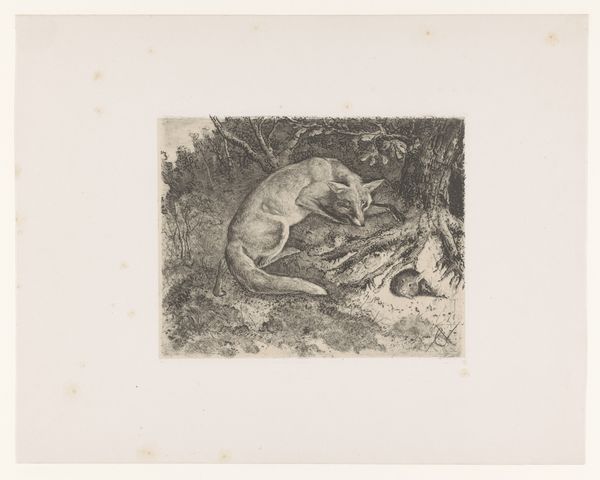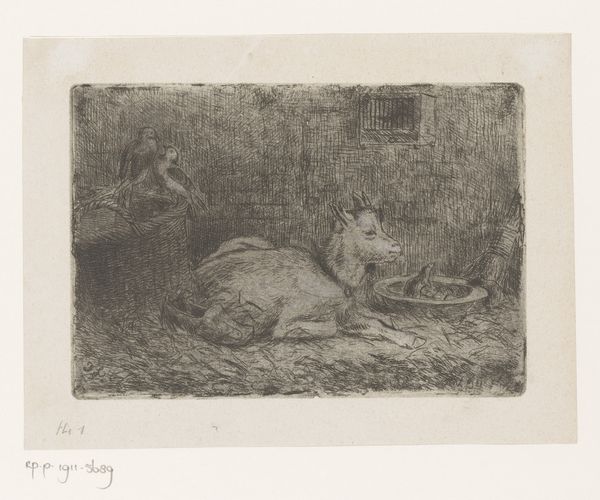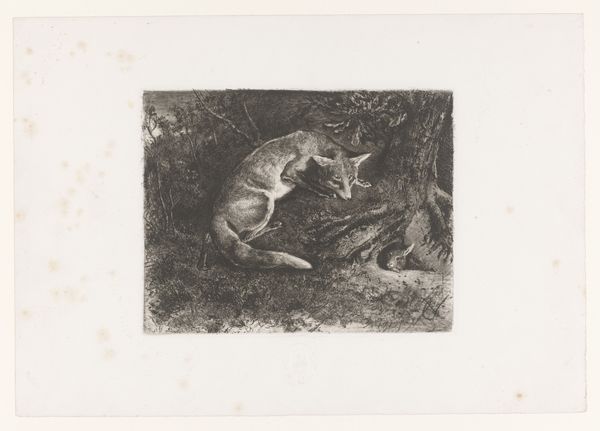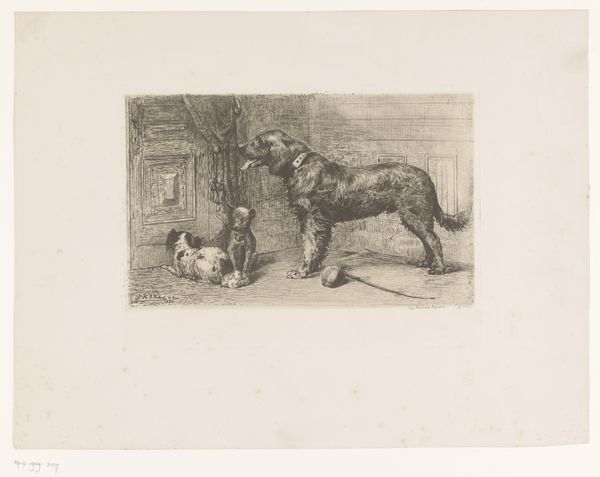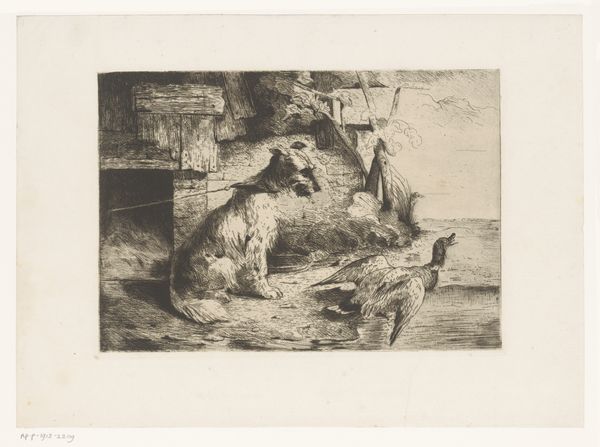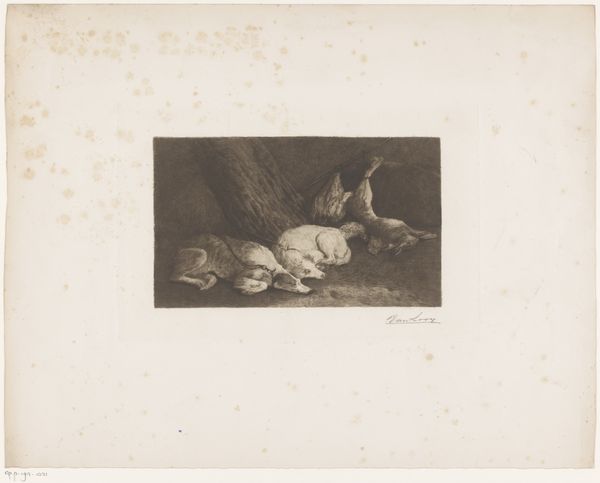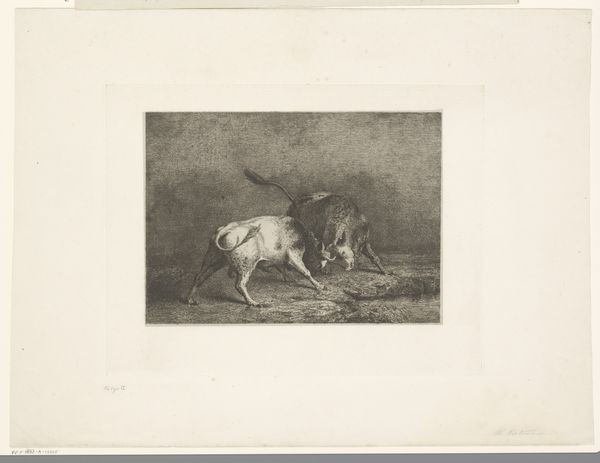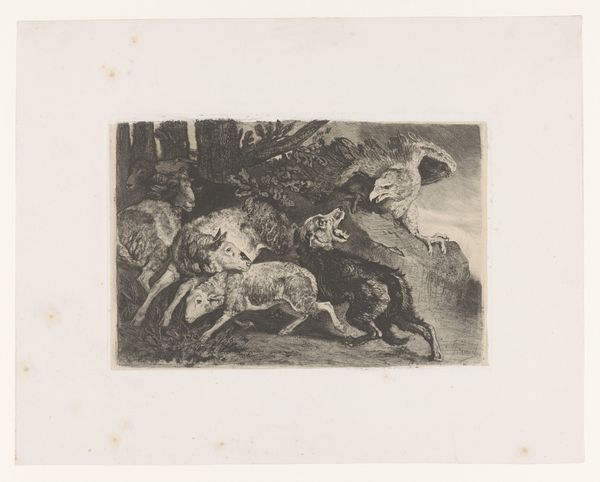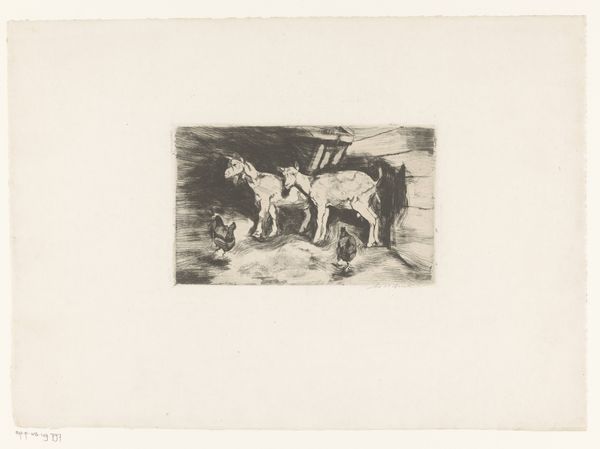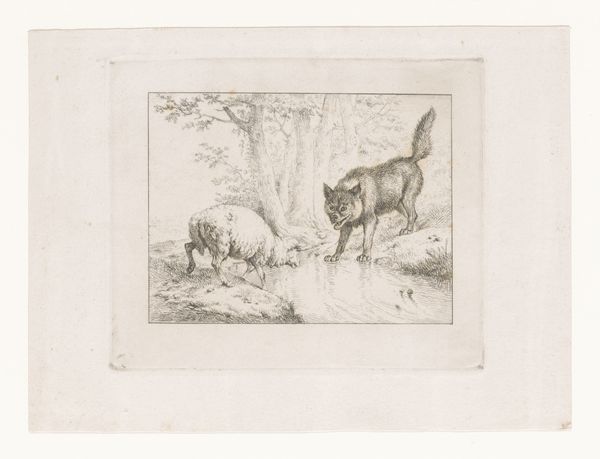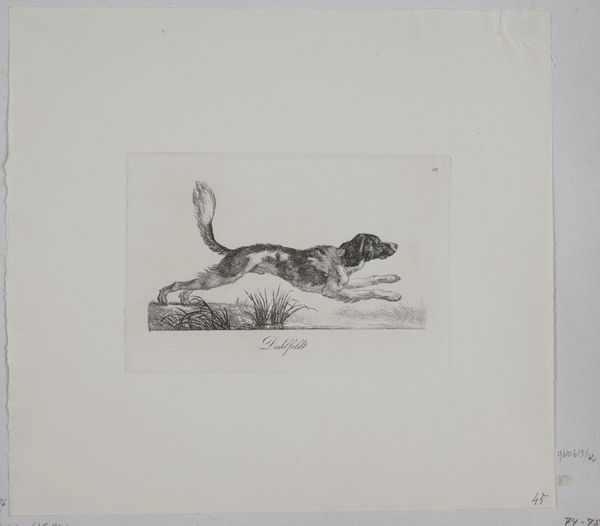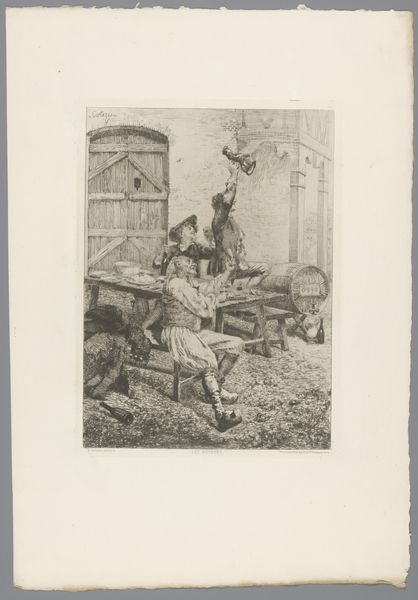
drawing, ink, graphite
#
drawing
#
animal
#
dog
#
ink
#
graphite
#
genre-painting
#
realism
Dimensions: height 158 mm, width 227 mm
Copyright: Rijks Museum: Open Domain
Editor: This is "Hond op de binnenplaats," or "Dog in the Courtyard," created in 1879 by Henri Kervyn van Lettenhove, using ink and graphite. The dog looks so forlorn! What's your take on it? Curator: I am intrigued by the deliberate choice of materials – ink and graphite. It speaks volumes about accessibility and perhaps even the perceived value of the subject matter at the time. Instead of costly oils, we see the artist engaging with readily available, almost humble materials. The lines denote that it was reproduced - which points to a material dissemination. Was it widely circulated? And to whom? Editor: Interesting! I hadn't considered the implications of using ink and graphite in terms of wider societal access to the image. So, you're saying that the choice of these materials might be linked to the social context of its creation and dissemination? Curator: Precisely! Think about the socio-economic realities of 1879. Who was this artwork intended for? Was it a private commission or a piece meant for broader consumption through printmaking? The material conditions directly shape how we understand its purpose. We see no lush bourgeois interiors, only Jack and his bowl, a worker. Editor: That makes me wonder about the labor involved in creating the print. The detail suggests it wasn’t quickly done. Curator: Absolutely. Consider the labour – the hours spent rendering the texture of the dog's fur, the brickwork, and the wood planks of its house, versus its potential resale or exchange value. There's a tension there that invites reflection on the artist's own position within the economic structure. Editor: Wow, I never would have looked at it this way. It really opens my eyes to thinking about art beyond just the surface level. Curator: Indeed! It encourages us to ask deeper questions about the relationship between art, labour, and society. I’ve noticed so many fascinating elements, looking beyond the obvious, focusing on how its materiality informs its meaning.
Comments
No comments
Be the first to comment and join the conversation on the ultimate creative platform.
